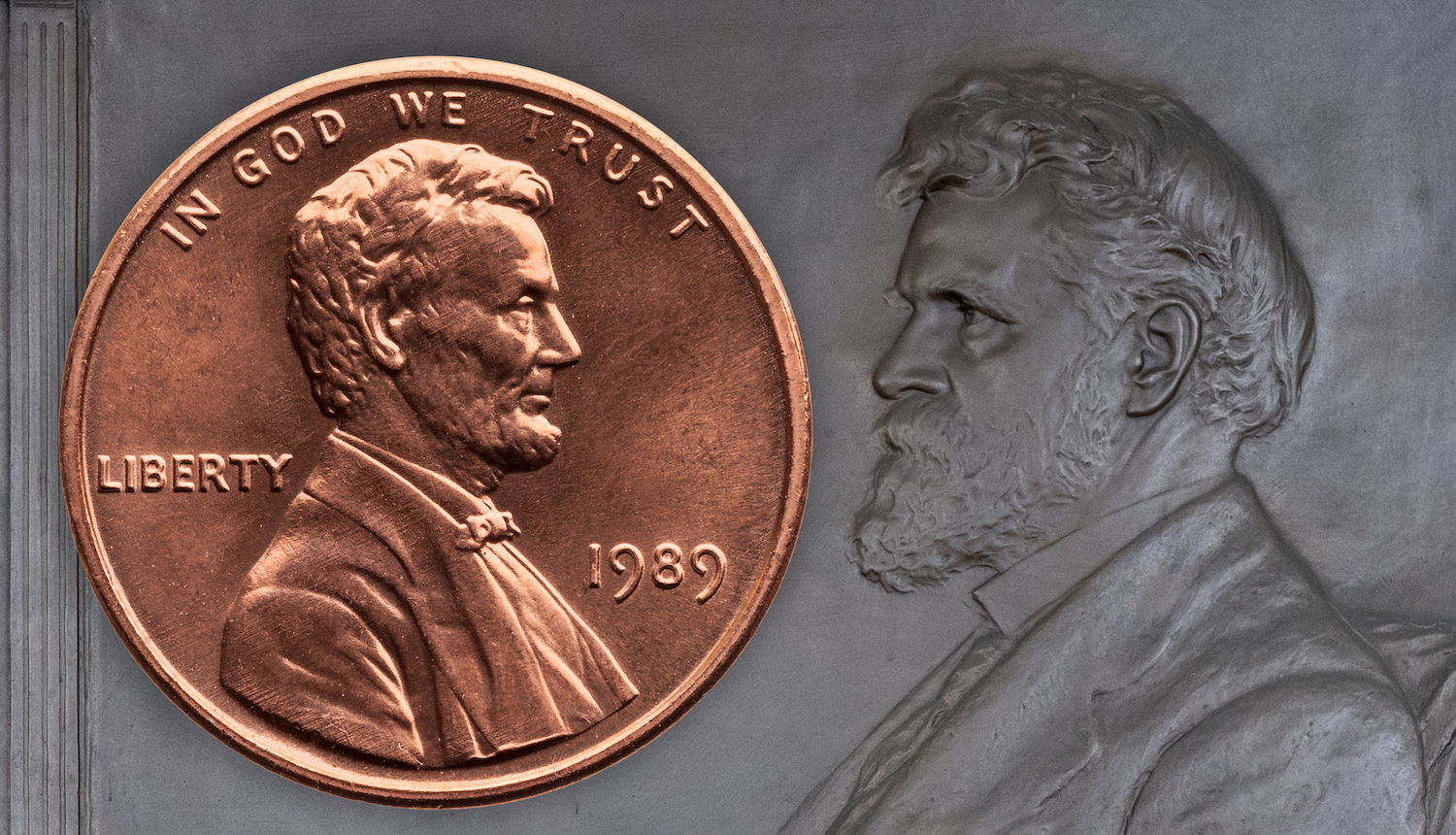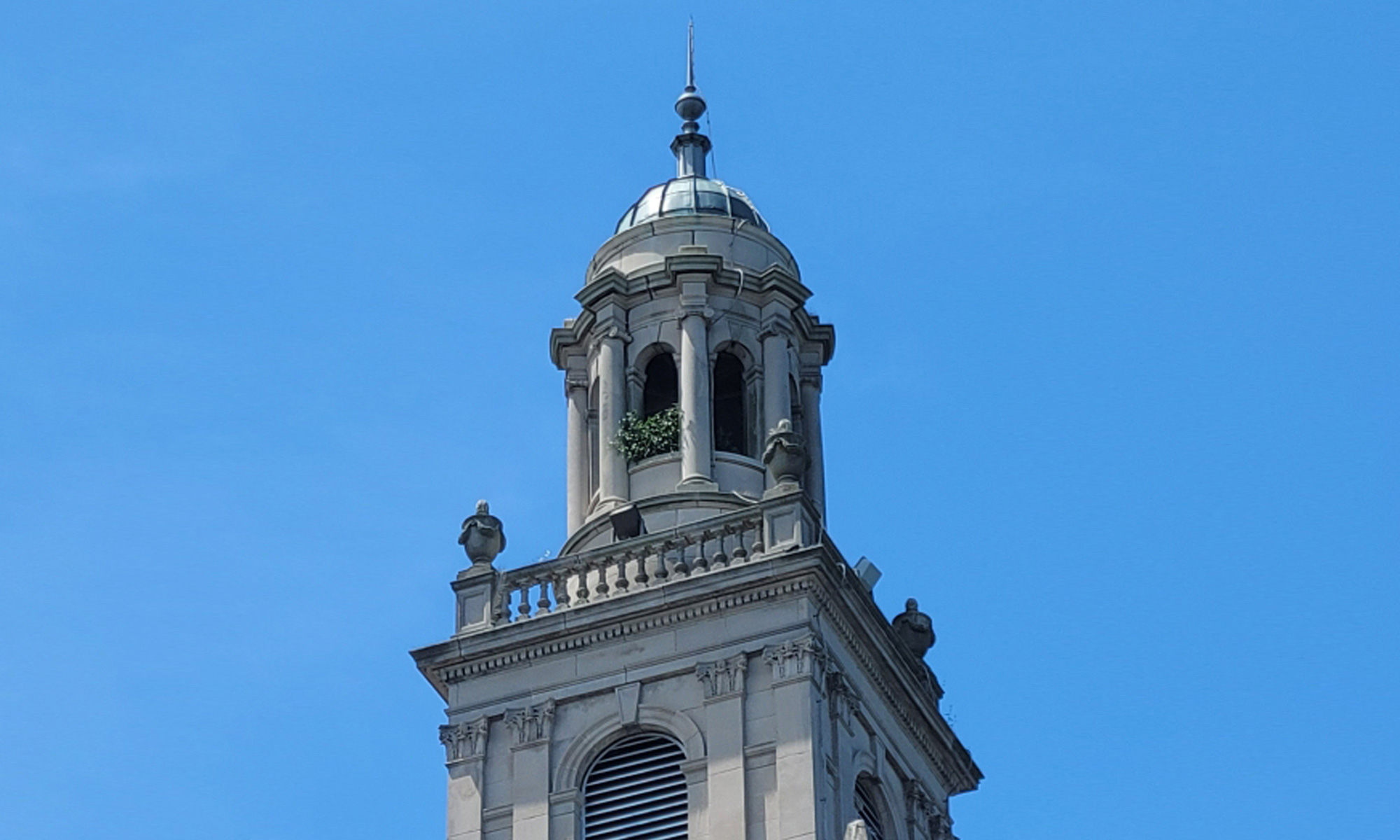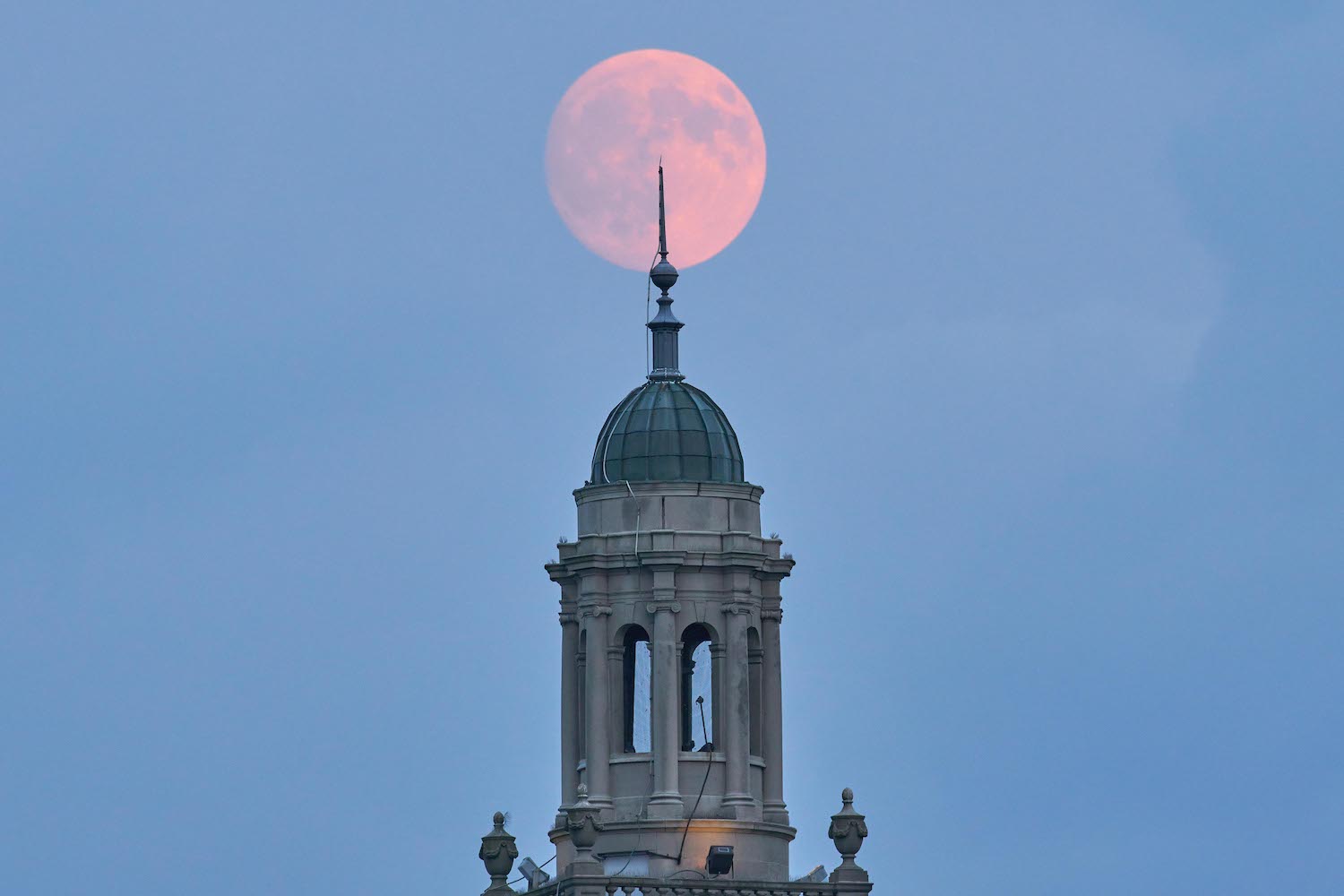The photo looks doctored despite eyewitness accounts to the contrary.
High above Chapel Walk grows the legend of the Swasey shrub — the sightings infrequent, but enough to keep curiosity seekers searching for this botanical Bigfoot.
This is no fraternity prank. Denison’s facilities services staff have ample experience dealing with the troublesome woody plant. Workers climb the innards of the Swasey Chapel bell tower once or twice a year to slay the shrub and dig out weeds that sprout from cracks.
Why do the unwanted growths keep reappearing?
Buzzy and his mates are partially responsible.
Seed-eating buzzards and pigeons roost in the cupola, facilities services workers said, fertilizing a tale that blossoms when the weather warms.
Pesticides are an option, but as long the birds keep making their deposits, the issue likely will persist.
While the campus is meticulously groomed, getting at Swasey’s stubborn growth is challenging. There’s no elevator to the top of the chapel.
Shrub-scrubbing treks are timed to avoid bell-ringing blasts to the ears.
The staff is so effective at rooting out the shrub that many on campus have never noticed it peeking above the open edges of the cupola.
Of course, not everyone is turned off by the occasional sightings.
“What a great problem,” longtime English professor Fredrick Porcheddu-Engel ’87 said. “I think that’s terrific. We could turn it into part of the attraction of Swasey. Another reason to be humbled by the chapel.”
For whom the bell tolls
Porcheddu-Engel loves the chapel, and one of his most memorable campus moments occurred there in the late 1990s.
It was Halloween night, and the English professor hauled three of his best students, a VHS player, an extension cord, and a video copy of Frankenstein to the bell tower. At some point, the group decided to have a bit of fun with unsuspecting passersby on Chapel Walk.
A lookout would signal to others when someone was strolling past Swasey. A few ominous notes were struck on the bell tower keyboard. Halloween hilarity ensued.
“The person would freak out and start running,” the professor recalled. “We were up to mischief, and it remains one of my favorite memories.”
Major investment
Swasey donated $400,000 to build the chapel in 1924. It’s tempting to use an inflation calculator to figure out that sum today. Estimates range around $7.3 million.
But Denison experts said that figure is likely inaccurate. The cost of building materials and labor would probably run $50 million in today’s market.
The extra mile
University benefactor Ambrose Swasey made a fortune in mechanical engineering and earned fame through technological advances in astronomical equipment and observatories.
The Denison Board of Trustees quickly learned that when Swasey put his mind to a task, it usually was completed. In the years between financing the construction of Swasey Observatory (1909) and Swasey Chapel (1924), the philanthropist embarked on a spectacular goodwill mission.
Swasey and his wife traveled the world and were fascinated by the story of 17th century astronomical instruments that were stolen from a Chinese observatory during the Boxer Rebellion in 1900. The precious items had been whisked to a palace in Potsdam, Germany.
He made it his crusade to ensure the safe return of the instruments. Using his influence, Swasey had a provision written into the Treaty of Versailles — yes, the treaty that ended World War I in 1919 — that allowed him to travel to Germany at his own expense and take the instruments to China.
Swasey’s love of China led to him donating $250,000 for a red brick building on the Sun Yat-sen University campus, which was named Swasey Hall.
In the stars
They don’t just name chapels and observatories after Swasey. His work in building some of the world’s largest and finest telescopes of the era earned him several celestial distinctions.
Bearing his name? A moon crater, “Swasey on the Moon,” and an asteroid, “992 Swasey.”
Foyer attractions
The main attraction inside Swasey is the sanctuary, with its rows of original pews, large columns, and beautiful chandeliers. But the chapel’s foyer contains several interesting nuggets as well.
The wall-mounted relief of Swasey is done by Victor David Brenner, the same artist responsible for the Abraham Lincoln penny. There’s also the Centennial Plaque that was originally displayed at the main entrance to campus in 1931. The stone identified Denison as a “Christian College of Liberal Arts,” in keeping with its Baptist roots. In 2006, the sign was replaced during the college’s 175-year anniversary celebration and eventually moved to the chapel.
The most eye-catching artwork is Her Son, a statue of a mother and child. Porcheddu-Engel said the statue was used in a Denison promotional film to symbolize a parent sending a child off to college.

The wall-mounted relief of Swasey is done by Victor David Brenner, the same artist responsible for the Abraham Lincoln penny.




